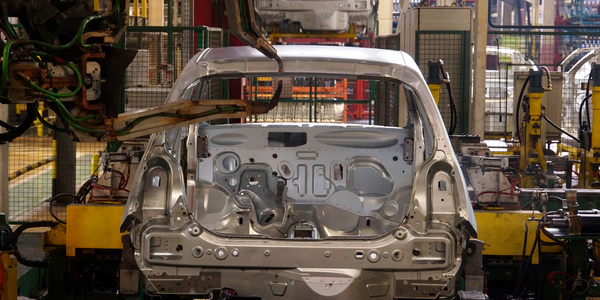
وœ؛ه™¨çٹ¶و€پ监وµ‹
- 设ه¤‡ن¸ژوœ؛و¢°
- 离و•£هˆ¶é€
- ç»´وٹ¤
2017 ه¹´وœ؛ه™¨çٹ¶و€پ监وµ‹ه¸‚هœ؛ن»·ه€¼ 22.1 ن؛؟ç¾ژه…ƒï¼Œé¢„è®،هˆ° 2024 ه¹´ه°†è¾¾هˆ° 35 ن؛؟ç¾ژه…ƒï¼Œé¢„وµ‹وœںه†…çڑ„ه¤چهگˆه¹´ه¢é•؟çژ‡ن¸؛ 6.7%م€‚
资و–™و¥و؛گï¼ڑ ه¸‚هœ؛ه’Œه¸‚هœ؛
هˆ° 2023 ه¹´ï¼Œوœ؛ه™¨çٹ¶و€پ监وµ‹è®¾ه¤‡ه¸‚هœ؛ه°†çھپç ´ 32 ن؛؟ç¾ژه…ƒم€‚
资و–™و¥و؛گï¼ڑ P&S Intelligence
وœ؛ه™¨çٹ¶و€پ监وµ‹çڑ„ن¼کهٹ؟وک¯ن»€ن¹ˆï¼ں
- وڈگé«کوœ؛ه™¨هڈ¯ç”¨و€§ه’Œهڈ¯é و€§
- وڈگé«کè؟گèگ¥و•ˆçژ‡
- و”¹è؟›é£ژ险ç®،çگ†ï¼ˆه‡ڈه°‘هپœوœ؛و—¶é—´ï¼‰
- é™چن½ژç»´وٹ¤وˆگوœ¬ï¼ˆو›´ه¥½çڑ„规هˆ’)
- ه‡ڈه°‘ه¤‡ن»¶ه؛“هک
- وڈگé«که®‰ه…¨و€§
- وڈگé«کن؛†ه¯¹وœ؛ه™¨çٹ¶ه†µçڑ„ن؛†è§£ï¼ˆهڈ¯èƒ½çڑ„وœ؛ه™¨ه®‰ه…¨çںوœںè؟‡è½½ï¼‰
- ه»¶é•؟وœ؛ه™¨çڑ„ن½؟用ه¯؟ه‘½
- و”¹ه–„ه®¢وˆ·ه…³ç³»ï¼ˆه‡ڈه°‘è®،هˆ’/è®،هˆ’ه¤–هپœوœ؛و—¶é—´ï¼‰
- و¶ˆé™¤é•؟وœںو•…éڑœï¼ˆو ¹وœ¬هژںه› هˆ†وگه’Œé‡چو–°è®¾è®،)
- ه‡ڈه°‘ه› ç»´وٹ¤وˆ–é‡چو–°ç»„装ن¸چه½“ه¯¼è‡´çڑ„ه¤§ن؟®هگژو•…éڑœ
هœ¨ه†³ه®ڑن½؟用وœ؛ه™¨çٹ¶و€پ监وژ§ه’Œو•…éڑœè¯ٹو–و—¶ه؟…é،»وƒè،،ه“ھن؛›ç¼؛点ï¼ں
- 监وژ§è®¾ه¤‡وˆگوœ¬ï¼ˆé€ڑه¸¸ه¾ˆه¤§ï¼‰
- è؟گèگ¥وˆگوœ¬ï¼ˆè؟گè،Œç¨‹ه؛ڈ)
- 需è¦پç†ں练çڑ„ن؛؛ه‘ک
- 需è¦په¼؛وœ‰هٹ›çڑ„ç®،çگ†و‰؟è¯؛
- é€ڑه¸¸éœ€è¦په¤§é‡ڈçڑ„è؟گè،Œو—¶é—´و¥و”¶é›†وœ؛ه™¨هژ†هڈ²ه’Œè¶‹هٹ؟
- ن¸ژه¢هٹ çڑ„هˆ©و¶¦ç›¸و¯”,é™چن½ژçڑ„وˆگوœ¬é€ڑه¸¸و›´éڑ¾ن½œن¸؛و”¶ç›ٹه‡؛ه”®ç»™ç®،çگ†ه±‚م€‚
و،ˆن¾‹ç ”究.







